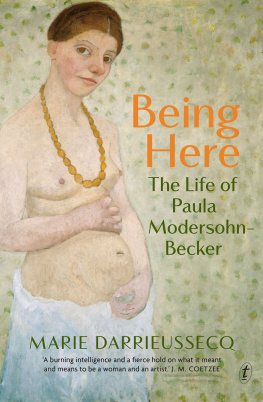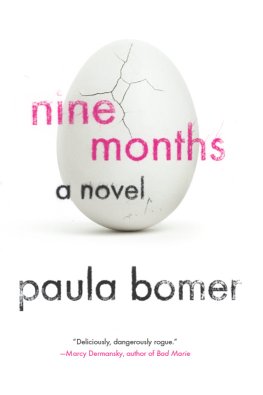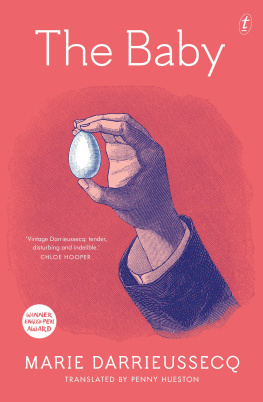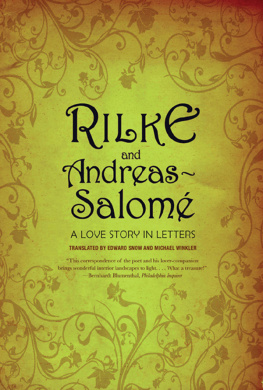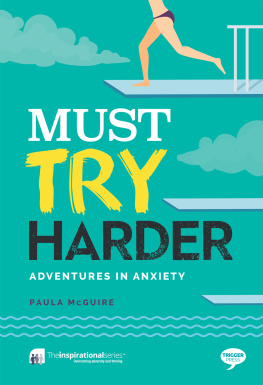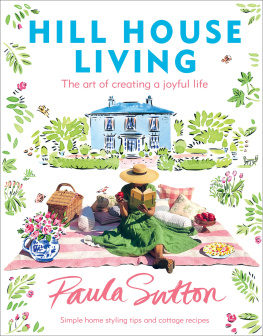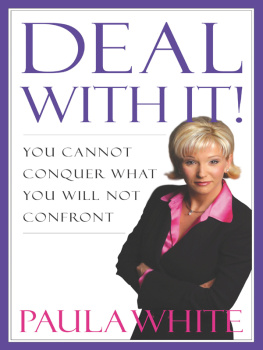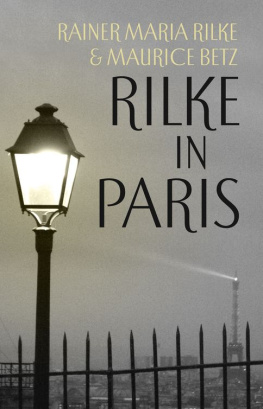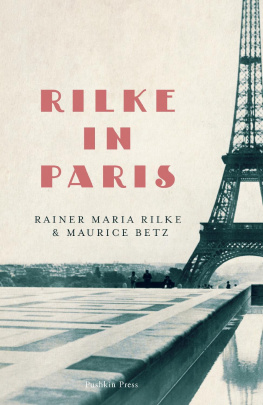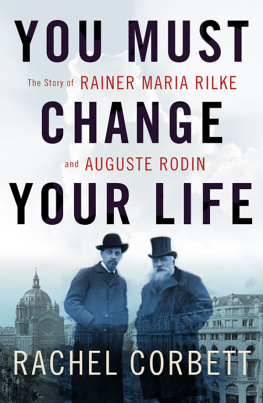
CONTENTS
I wrote this biography while Julia Garimorth, Fabrice Hergott and I prepared the Paula Modersohn-Becker retrospective at the Muse dArt Moderne de la Ville de Paris, which was held from April to August 2016: a spring and a summer for Paula, one hundred years after her last trip to Paris. It was my gesture of love to her: to write about her, to show her work.
I would also like to thank Michel Vincent of the French-German Cultural Centre of Essen, for his oral translations, for his friendly management skills, and for reading my text.
Diane Radycki, for her invitation to New York, for our invaluable correspondence, and for reading my text. And thank you to Monica Strauss for her hospitality.
Susanne Gerlach of Bttcherstrasse in Bremen, for her wonderful hospitality.
Wolfang Werner, an inexhaustible mine of information on Paula.
Verena Borgmann.
Guillaume Faroult.
Sylvain Amic.
Hella Faust.
Anna Frera.
Hanna Boghanim.
Stphane Gugan.
Jean-Marc Terrasse.
Emiliano Grossman.
Frank Lauktter.
lisabeth Lebovici.
Emmanuelle Touati.
All quotations from Paulas journals and letters are from Paula Modersohn-Becker: The Letters and Journals, edited by Gnter Busch and Liselotte von Reinken, and edited and translated from the German by Arthur S. Wensinger and Carole Clew Hoey, Northwestern University Press, 1998.
Paula Modersohn-Becker, Werkverzeichnis der Gemlde, catalogue raisonn, edited by Gnter Busch and Wolfgang Werner, Hirmer Verlag, 1998.
Paula Modersohn-Becker Briefwechsel mit Rainer Maria Rilke, Insel-Bcherei no. 1242, 2011. Correspondence between Paula and Rilke.
Letters of Rainer Maria Rilke 18921910, translated by Jane Bannard Greene and M. D. Herter Norton, W. W. Norton & Company, 1945.
Rainer Maria Rilke, Letters to a Young Poet, translated by M.D. Herter Norton, W. W. Norton & Company, 1993.
Rainer Maria Rilke, Diaries of a Young Poet, translated by Edward Snow and Michael Winkler, W. W. Norton & Company, 1998.
The Collected Works of Rainer Maria Rilke, Pergamon Media, 2015.
Diane Radycki, Paula Modersohn-Becker: The First Modern Woman Artist, Yale University Press, 2013.
Eric Torgersen, Dear Friend: Rainer Maria Rilke and Paula Modersohn-Becker, Northwestern University Press, 1998.
Ralph Freedman, Life of a Poet: Rainer Maria Rilke, Northwestern University Press, 1998.
Maa Brami, Paula Becker: La Peinture Faite Femme, ditions de lAmandier, 2015.
Correspondence addressee Hayashi Tadamasa, sous la direction de Brigitte Koyama-Richard, Kokushokankdai, Institut de Tokyo, 2001.
Jens Peter Jacobsen, Niels Lyhne, Penguin, 2006.
Knut Hamsun, Pan, Penguin, 1998.
mile Zola, The Collected Works, Halycon Classics, 2010.
Henrik Ibsen, A Dolls House and Other Plays, Penguin, 2016.
Virginia Woolf, A Room of Ones Own, Oxford World Classics, 2008.
Virginia Woolf, Three Guineas, Oxford World Classics, 2008.
There are various catalogues and illustrated art books on Paulas work, including that by Averil King (Paula Modersohn-Becker, Antique Collectors Club, 2009). Most are published in Germany. The most recent I know of is the catalogue of the 2014 exhibition at the Louisiana Museum in Denmark, which includes the article by Tine Colstrup, Venus of Worpswede. Several biographies exist in German, including that by Rainer Stamm, Ein kurzes intensives FestPaula Modersohn-Becker, Reclam-Verlag, 2007.
Sin Reynolds, Comment peut-on tre femme sculpteur en 1900? Autour de quelques lves de Rodin, Perse, 1998, www.persee.fr, with the quotation from Kathleen Kennet (Self-Portrait of an Artist: From the diaries and memoirs of Lady Kennet, Kathleen, Lady Scott, Murray, 1949).
Denise Nol, Les Femmes peintres dans la seconde moiti du XIXe sicle, https://clio.revues.org/646, 2004, which includes the quote on p. 69 by Sophie Schaeppi from her diary of 1892.
I
The Acadmie Julian, where Marie Bashkirtseff was a student, was also mixed, the only difference being that the boys and girls were separated for the classes with naked models. For some reason, enrolment in all classes cost twice as much for girls as it did for boys.
Thanks to the persistence of the sculptor Hlne Bertaux and the painter Virginie Demont-Breton.
II
When Paula read it she thought it contained more about Rilke than about Worpswede. (9 March 1903)
From Rilkes Diaries of a Young Poet, translated by Edward Snow and Michael Winkler, W.W. Norton & Company, 1997.
Lou was of Russian-Huguenot origin.
From Death Fugue, by Paul Celan, 1945, translated by Michael Hamburger. Penguin Classics, 1996. On the death of a friend of Claras, Rilke wrote: It was your destiny, Marguerite, to die very young, and to die blonde
Which will result in Rilkes Notes on the Melody of Things.
Wenn de Bom ist hoch, ist de Planter dot.
Rilke found writing difficult, so he wrote letters more than anything else.
W.G. Sebald, Max Ferber, The Emigrants, translated by Michael Hulse, Harvill Press, 1997, p.181.
III
Rilke recalled that Claras first sculpture teacher (the sculptor Max Klinger) took the trouble to show her the whole incredibly painful path that lies between a young girl and success.
Introduced by William II, this slogan rose to prominence at the end of the nineteenth century and was championed during the Third Reich.
IV
This reminds me of the favourite meal of another walker and lover of pears, Jean-Jacques Rousseau. Give me any dairy products, eggs, herbs, cheese, brown bread, and tolerable wine, and Im bound to be happy.
He began a new life there after the death of Paula. Clara Westhoff and Ruth also came to live in Fischerhude; Clara died here in 1954.
Mller was Danish. In 1918, the German Federation of Naturism was founded, the first in the world. The Scandinavians then founded a similar federation. Amrun Island, in the Frisian Islands, where Paula went swimming, rain, hail or shine, is still one of the biggest naturism centres in Europe.
From Rilkes Letters to a Young Poet, translated by Stephen Mitchell, Random House, 1984.
When Rilke, in 1917, refuses to participate in the publication of Paulas posthumous papers, he queries whether her writings during the final years had been withdrawn (perhaps by Paula herself) or if, quite simply, her last years were too short, in the breathless charge of her artistic practice, to allow her any time to articulate it.
V
Adrien Bovy, Ramuz vu par ses amis, souvenir de 1906. ditions Lge dhomme, 1988.
A year later, Michel Vincent told me that the painting had been taken upstairs.
Quoted by Tine Colstrup in the catalogue from the Museum of Louisiana, 2015. The Reclining Mother and Child is also designated as degenerate in a long article in the Bremen newspaper on 28 August 1935.
Eva Gonzals (184983), a student of Manet, died at thirty-three from a pulmonary embolism a few days after giving birth.
On 5 December 1812, in the Mercure de France, an art critic, Le Franc, wrote a demolition piece about her painting The Young Naiade: I wish that less time and trouble were spent teaching young women about what constitutes the ideal proportions of the human body, about the form and function of every muscle, well, about even both the femur and the sacrum, and so many other wonderful things, the study of which seems to me nothing short of enlighteningA woman should restrict her painterly ambitions to a few bouquets of flowers or to recording on canvas the features of her dear parents. To go any further, would that not amount to revealing oneself as rebelling against nature? Is it not a violation of all the laws of modesty? Constance Mayer committed suicide in 1821, aged forty-five.
Next page
